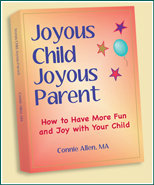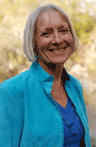One of the things I deeply appreciated about the people in Scotland was the way they talked with my 6-year-old grandson Sebastian when we were there a couple of months ago. (How I love all the wonderful memories of times we shared!)
I noticed it first with Devon in his flat where we stayed the first three days in Edinburgh. He talked with Sebastian as if he were a peer, straight-across, with no hint of talking with him as a ‘child’.
This continued everywhere we went – Jim on the train from Inverness, a couple with their young daughter Sebastian met on the ferry, Angus who ran a lovely guesthouse where we stayed.
The difference was in their way of perceiving Sebastian, which came across in their tone of voice when they spoke with him. They respected him as an equal person of value.
Contrast this to the way I observe many people talk with young people here. Often it’s louder, kind of cutsie, more hyper or more ‘enthusiastic.’ It’s a different tone of voice and way of talking. It’s as if we need to talk this way in order for them to understand or hear us. Or to entertain them or get their attention.
With older children, we may talk more sternly, with more a tone of judgment or authority. Sometimes it’s a tone of exasperation or frustration. Or annoyance
It’s seldom as if they are our peers. We never talk with our adult friends the way we talk with our children.
You may be wondering how I can think of children as our peers. Obviously, they have not had the life experience we have had, which can be an asset or a liability, by the way. And there are times when we need to use our best judgment and be ‘the adult,’ but this doesn’t need to prevent us from treating young people as the capable, sensitive, brilliant people they naturally are.
If you don’t know what I’m talking about, I invite you to listen to yourself and the people around you. You’ll observe this way of talking with children. This has become our cultural norm. Sometimes I catch myself doing it with my grandchildren.
I have no idea how this cultural pattern started, although I’m sure it’s perpetuated because of our unrecognized limiting beliefs about who children are and that we see it all around us.
I see this tone of voice as a way we unintentionally talk down to children, somehow see them as less than us, less bright, less capable because they are younger. Then young people, being the sensitive, brilliant, aware people they naturally are, get our message and feel confused, shamed, uncertain, or resistant.
When we speak with our children in other than our normal speaking voice, we’re definitely not being our real selves, something our children dearly need and want from us. Being real with them allows us to more deeply and honestly connect with our precious young ones.
When I catch myself being the ‘adult’ with my grandchildren, I feel tension in my body and I realize I’m not being myself. I’m not feeling comfortable in my own skin.
Here are some things I’ve discovered that help:
1. Slowing down, taking slow deep breaths so I can be more present. When I’m racing around, focused on getting things done, I’m not really connecting with my grandchildren.
2. I try to stay aware of my own emotions, my tension in my body, my tone of voice so I can do something about it.
3. When I notice I’m talking with Sebastian and Madison as if they are ‘children,’ less capable than they are, not fully people, I take a deep breath or two, slow down, get in my body, look them in the eye, and show up as myself, honestly myself.
The beauty of being present and more fully myself is I experience my deep love for them and the joy of getting to be with them. They are wonderful and life is sweet!
I invite you to explore your tone of voice, how you communicate with young people in your life, and see what you discover.
************
An Invitation to join “Our Children’s Inner Brilliance Community”
In writing this, I saw how rich a topic this is. There are so many discoveries and discussions we can have about this seemingly simple subject of our tone of voice when we talk with young people and what that is telling them.
If you’d like to continue this exploration and discussion, I invite you to join ‘Our Children’s Inner Brilliance Community.’ where we’ll explore this topic in the next couple of weeks.
This Community is for anyone who cares about nurturing the Inner Brilliance of our children and who wants to nurture them in being who they are.


 Just a little bit about me -- I'm a coach for parents, visionary guide, insightful trainer, and powerful consultant.
Just a little bit about me -- I'm a coach for parents, visionary guide, insightful trainer, and powerful consultant.
Speak Your Mind